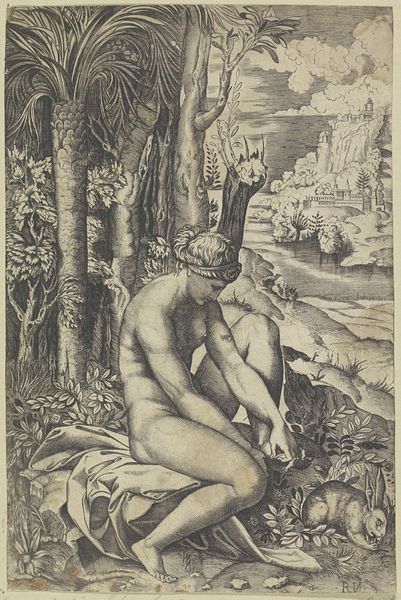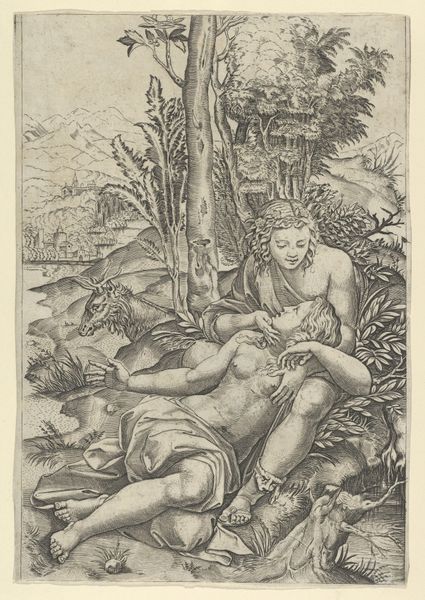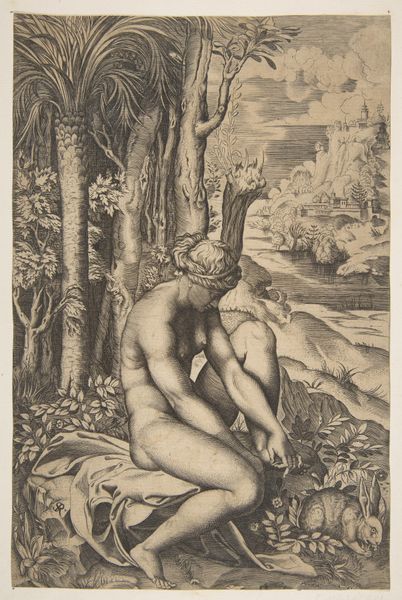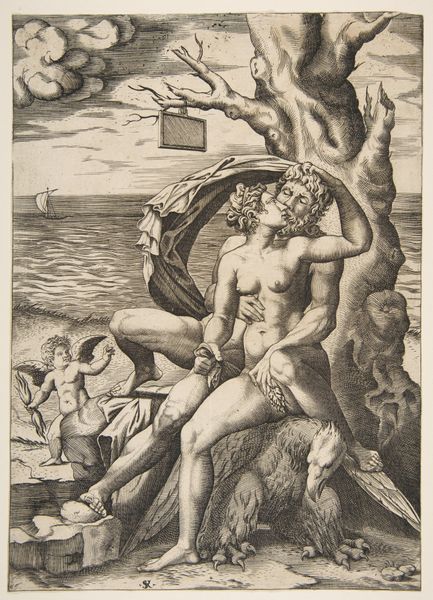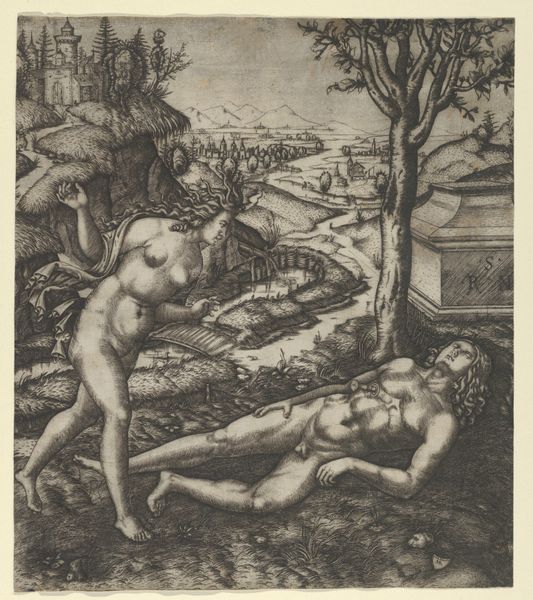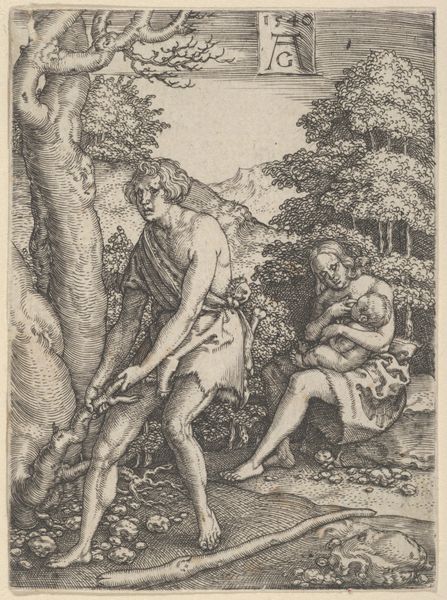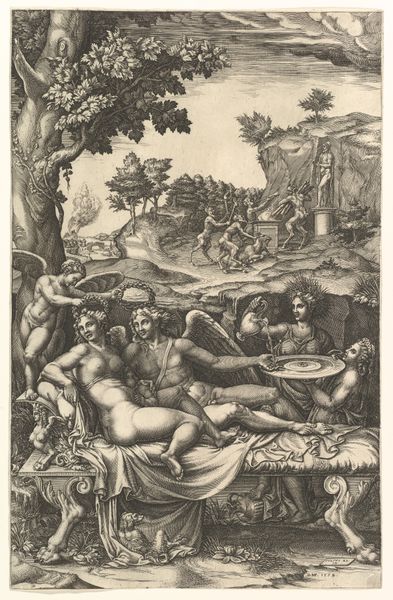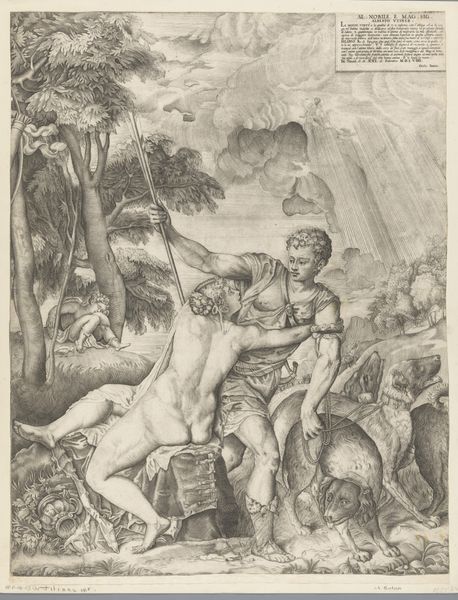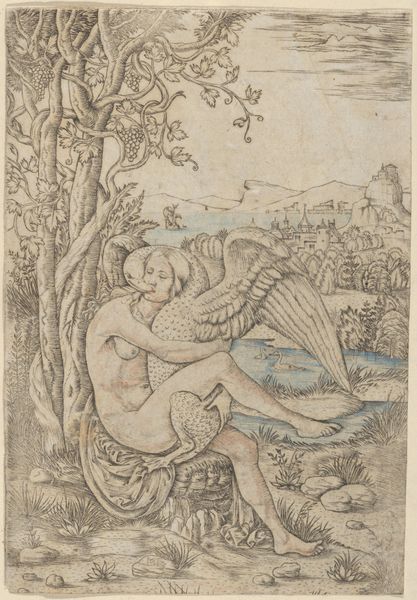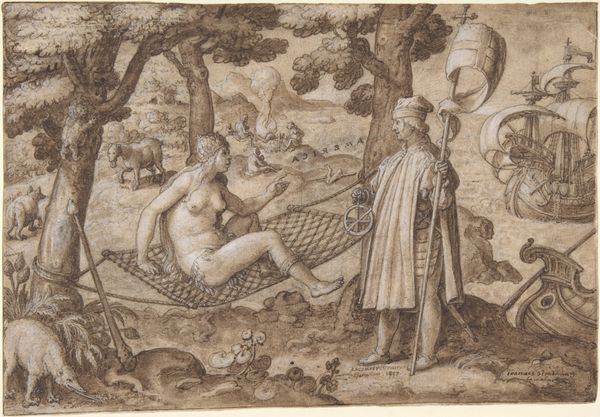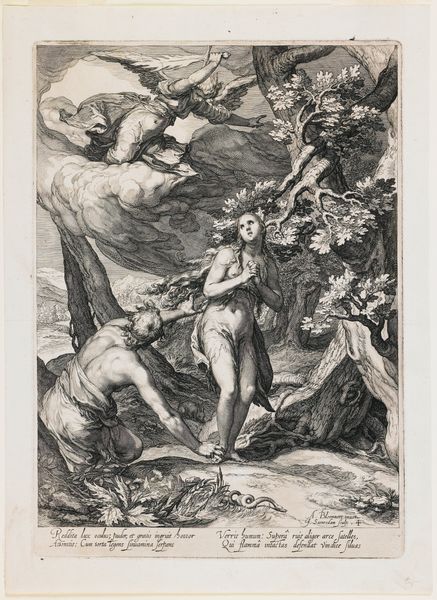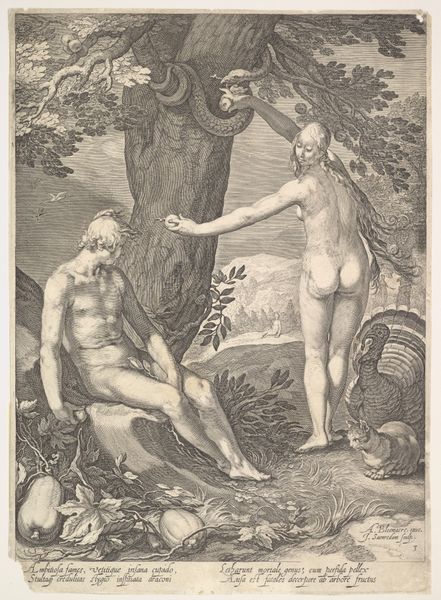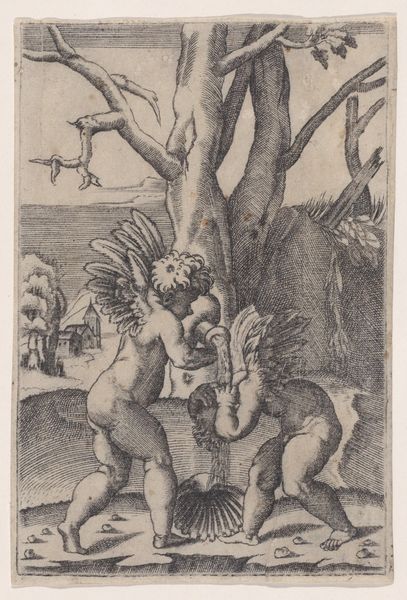
print, engraving
#
allegory
# print
#
landscape
#
figuration
#
northern-renaissance
#
nude
#
engraving
Dimensions: 18 3/8 x 14 in. (46.67 x 35.56 cm) (sheet, irregular)29 x 23 in. (73.66 x 58.42 cm) (outer frame)
Copyright: Public Domain
Editor: This is "Vertumnus and Pomona," an engraving by Jan Saenredam from after 1605, currently at the Minneapolis Institute of Art. The detail is amazing. What strikes me is the contrast between the youthful nude and the cloaked, older figure. What can you tell me about this piece? Curator: It's a beautiful rendition of the Roman myth. See how the landscape is almost overflowing with bounty? Every detail from the fruits to the vegetables, to the figures themselves, carries meaning. Editor: Meaning like...? Curator: Like how Vertumnus, the god of seasons and change, disguises himself as an old woman to woo Pomona, the goddess of fruitful abundance. The disguise itself symbolizes transformation and deception, powerful themes explored across art history. What emotional weight does the contrast in their ages suggest to you? Editor: Maybe that love and desire are universal, not limited by age or appearance. There's a vulnerability in Pomona's gaze that hints at a deeper connection. Curator: Precisely. The symbolism is echoed in the ripe, almost bursting fruits; a visual metaphor for fertility and the promise of fruition. This visual language connects back to earlier artistic traditions of gardens as sites of love, union, and temptation. Editor: So it's more than just a pretty picture. It is filled with multiple layers of symbolism. Curator: Absolutely! This image speaks volumes about desire, transformation, and the cyclical nature of life, echoing cultural memory through visual form. It is interesting that even now we continue to re-tell the stories in the myths. Editor: It's amazing how much information is packed into one scene. I'll definitely be looking at art differently now, searching for those layers of symbolism. Curator: Exactly. Understanding the symbols allows the viewer to enter a timeless narrative.
Comments
minneapolisinstituteofart almost 2 years ago
⋮
The story of Vertumnus and Pomona dates to Roman antiquity, but was made popular and accessible through Ovid’s "Metamorphoses." Vertumnus, the god of seasonal change, had designs on Pomona, the goddess of orchards and gardens—her name remaining familiar through the word pomegranate or the French word for apple. She was a beauty with a reputation for thwarting male advances. Bloemaert appropriately showed her surrounded by an abundance of luscious produce, and—given her reputation in the realm of romance—her sickle may have had uses that would give a man pause. But Vertumnus had a plan: he disguised himself as an old woman to gain entry into Pomona’s garden, and there gave her counsel against rejecting suitors, eventually seducing her himself. The choice of the Vertumnus and Pomona as a subject is typical of the late Mannerist phase. Earlier on, artists had sought esoteric, obscure subjects, but as time passed, they gravitated to more widely known stories, especially erotic tales available in the "Metamorphoses."
Join the conversation
Join millions of artists and users on Artera today and experience the ultimate creative platform.
